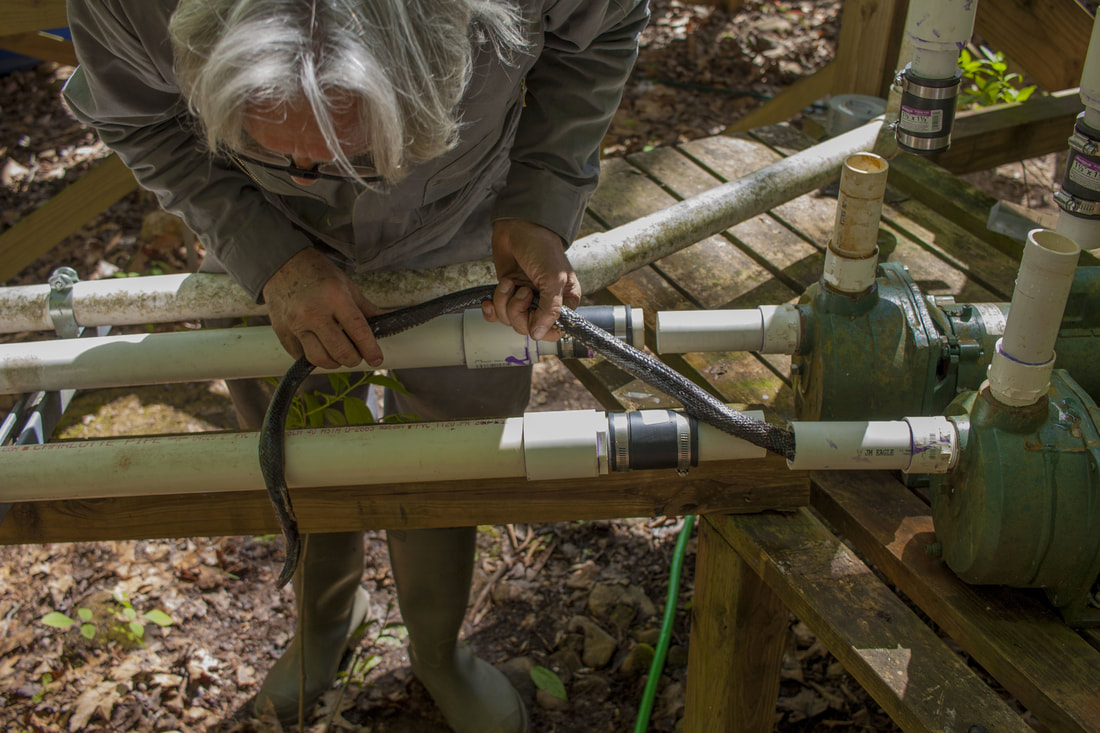|
Although sampling and preparatory work has been going on for some time, May 1 was the official start date of our new multi-PI NSF project that will examine the consequences of warming for detrital carbon processing in low-order forest stream networks. For the next three years, we'll be working across the Coweeta basin to shed more light on the temperature dependence of detrital processes, using a combination of natural across-stream temperature gradients, a heated stream-side channel array and a whole-stream warming manipulation. The manipulative experiments won't begin until 2019, so we have a year of sampling ambient conditions ahead of us. The University of Georgia team has done a fantastic job setting up the infrastructure necessary to construct comprehensive organic budgets for the two streams (reference and experimental) that will be used in our whole-stream warming study. The shot on the left below shows the Coshocton sampler and coarse organic matter trap designed to quantify fine and coarse organic matter outputs, respectively, from the experimental stream. On the right you can see the set of three collection barrels for fine organic matter outputs from the Coshocton sampler in the reference stream. In the meantime, we have been very busy re-purposing the stream-side channels that were built beside Shope Fork at Coweeta back in 2010 as part of our last NSF project there ("SNAX3"), which examined the consequences of dissolved N:P ratios on detrital food web processes. This has involved a complete upgrade of the electrical supply to the channels (to 20 kW!), splitting and re-plumbing header tanks, and installing the cartridge heaters that will warm the water supplying the channels. None of this would have been possible without the help of our trusty engineer, Dr. Philip Johnson, who was also instrumental in making our temperature manipulations in Iceland such a great success. Here's Philip working on wiring in the heaters, along with a shot of Phoenix Rogers doing some plumbing work. Here's a shot of the cartridge heaters now installed in the old header tanks, each of which has also been split into two. These will allow us to have five temperature treatments, each replicated in four channels. The channels are almost completed, but we now know that the old pumps that transferred water from Shope Creek to the large holding tank will need to be replaced. The discovery of a four-foot black rat snake in an inlet pipe may have had something to do with the demise of one of them! Unfortunately, the snake did not survive the encounter either :( It's exciting that we are finally getting this large project going. Watch this space for more news and photos as we continue our work at Coweeta over the next three years.
0 Comments
|
|
|
Accessibility | Equal Opportunity | UA Disclaimer | Site Disclaimer | Privacy | Copyright © 2020
The University of Alabama | Tuscaloosa, AL 35487 | (205) 348-6010 Website provided by the Center for Instructional Technology, Office of Information Technology |








 RSS Feed
RSS Feed